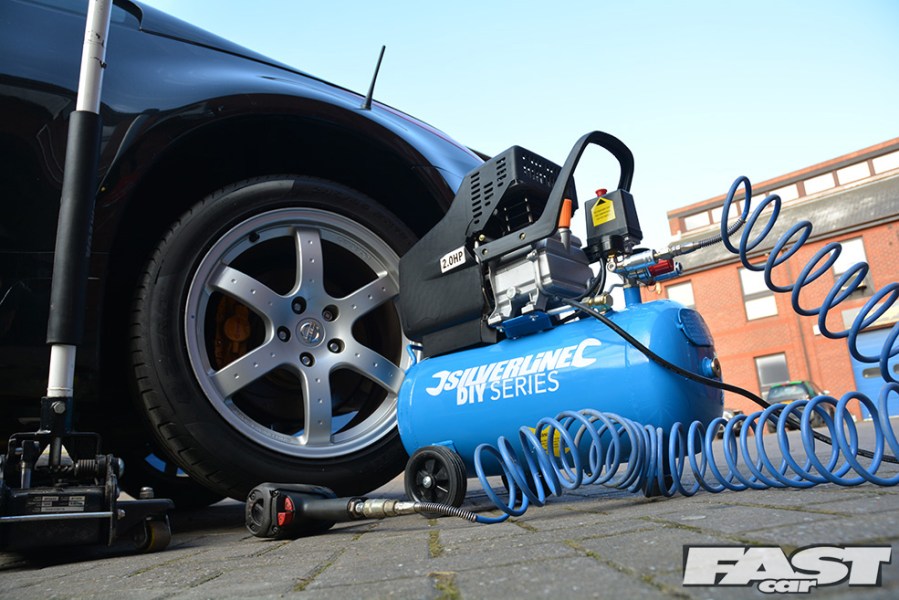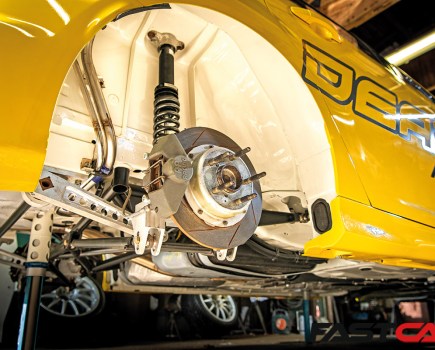Air compressors are the vital piece that powers all air tools, and we’re here to show you what’s out there, what you need, and why you need it.
Air tools are found in almost all professional workshops and owned by whole heap of enthusiastic amateurs, and for good reason! In comparison to electrical versions that perform similarly, air variants are cheap, light, compact, quiet, and often far more controllable too. As such, they’re usually the item of choice in environments where power tools are in near-constant use.
Unfortunately there’s one integral part of the air tool way of life that isn’t cheap, light, compact, or quiet at all. That’s what supplies the air to make the tools work: the compressor. This is also the most complex and varied part of the setup, and that’s why we’re here to help guide you on your way…
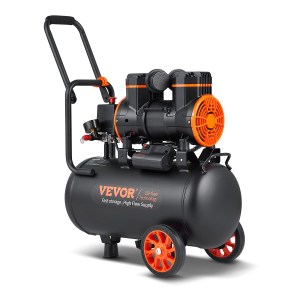
How do Air Compressors work?
Air compressors comprise of three main components: the compressor, the motor, and the air storage tank. As you may have guessed, the motor powers the air compressor, which forces the compressed air in to the storage tank for you to use with your air tools.
They can be powered by electric, diesel, or petrol motors, and the compressors themselves can be a variety of forms, most commonly piston and screw compressor types, but many more exist and some use a combination of types and/or multiple stages of compressor. There’s even trailer mounted ones powered by turbocharged engines, which use a second turbocharger to feed boost to the screw compressor, that then compresses the air even more!
The compressors discharge the air in to a storage tank which can be a huge variety of sizes, and the compressor is generally switched on and off automatically at pre-determined storage tank pressure levels.
Finally, the air reaches the tool via a hose, and a second regulator adjusts the pressure for any particular tool.
Looking to buy one? Consider a product like the Vevor air compressor pictured above. Check out price comparisons for it below:
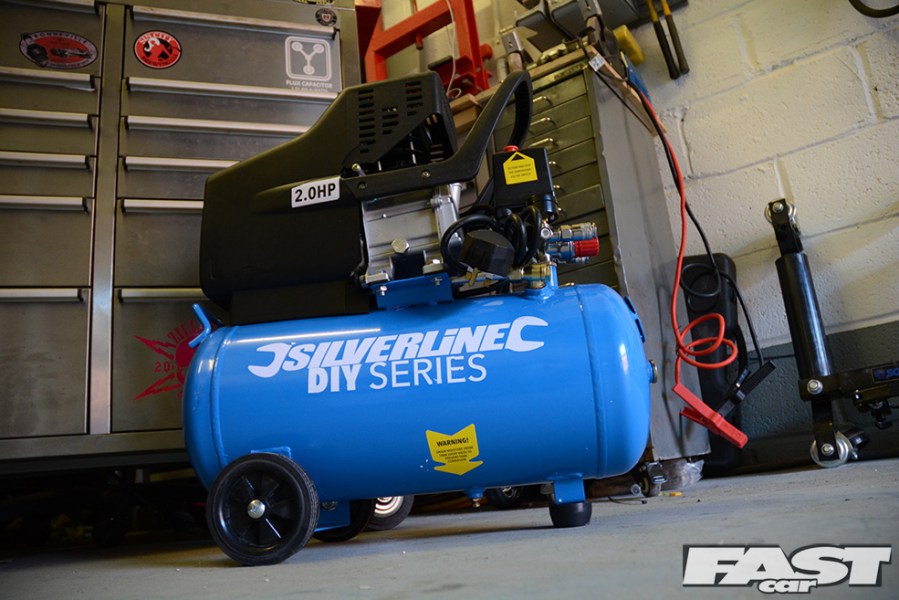
What Size of Air Compressor do I need?
When considering size, there’s two factors to think about: air tank size and compressor maximum flow. For most automotive workshop use, air tank size is a very important factor as most of the air tools used – ratchets, drills, grinders, paint sprayers, and so on – have a continuous airflow while active. By contrast, something like a nail gun or riveter just uses a sudden burst of air, and therefore requires a smaller tank.
Another added bonus of a larger tank is so the compressor itself doesn’t activate so often, which, bearing in mind even the quietest ones are rather noisy, can really be of a big benefit.
To calculate what compressor you need to run your tools, you need to check the flow rate for your planned tools. Each piece of equipment will state their recommended levels, but typical workshop air tools require 5-10CFM flow rate each. That said, you have to bear in mind that CFM rates are calculated for you using the tool for a 25% duty cycle, so 15 seconds per minute for example. When using a lot of workshop tools there will be times when you’ll be using them continuously for longer than that, so in an ideal world a compressor with four times the flow rate would be best. However, a large storage tank can partially negate this.
The final thing to consider about size is if you’ve got a workshop where more than one tool is used at once. If that’s the case, you’ll need a flow rate that matches the combined CFM of these tools. Generally, that means you’ll need a compressor unit that’s twice as capable.
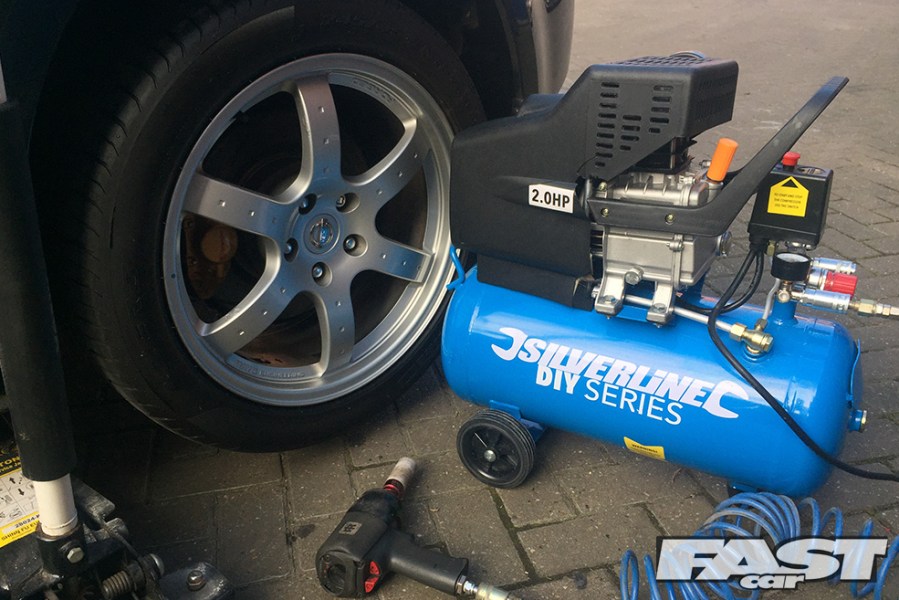
Noise
There are many ‘Quiet’ or ‘Silent’ air compressors are on the market, and while they are much more expensive, they certainly are quieter than a typical compressor. You must understand though, they are still not truly quiet, and certainly not silent.
These units tend to be as loud as a typical 12v tire inflator at the very least, usually louder. The best way to keep noise down is to use tools with a very large air tank so that the compressor isn’t operating very often, as the duty cycle of compressor operation will be very low.
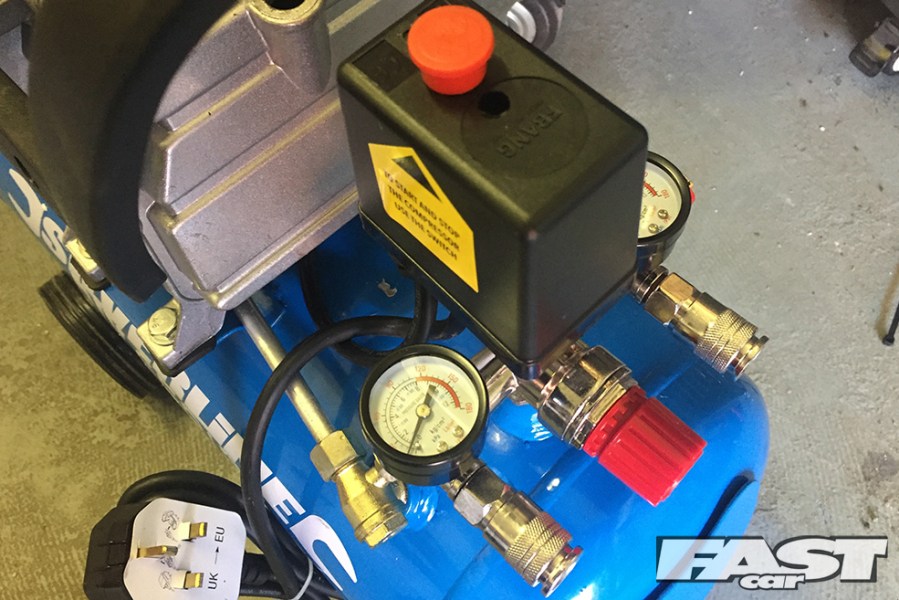
Power source
Unless you need the unit to be portable, an electrically powered air compressor is the way to go. Petrol and diesel air compressors do exist, especially when it comes to larger units, but you would rarely (if ever) need those for home automotive use. Instead, you’re more likely to spot them when someone is providing a mobile service that requires a compressor. In those instances, some compressors come with their own dedicated trailer for transportation.
Typical minimum CFM for air tools:
Note * indicates tools which has a continuous airflow, so 4x higher compressor CFM would be preferable.
Nail gun- 2
½“ Impact wrench- 6*
Spray gun- 15+*
Die grinder- 10*
Air drill- 5*
Rivet gun- 3
Orbital sander- 7*
Angle grinder- 8*
3/8” ratchet- 5*
¼” ratchet- 4*
Air hammer- 5*
Air saw- 5*
Sand blaster- 20+*

